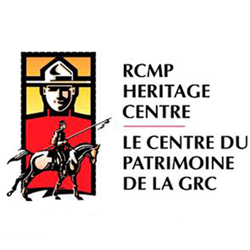S/Major Walter Wrixton de Rossiter – Reg.#2236
Seeking to find more information on Walter de Rossiter, I acknowledge that I have taken the liberty of using information on Walter de Rossiter’s life story written by Scott Rossiter and it appears in the Family Pursuit Community Family Tree web site.
Walter Wrixton de Rossiter’s story is, like so many from the early days of the Force, that of a young boy arriving from Ireland, seeking a new life in Canada. He was born in 1867 in Ceylon and, at some point, his family moved back to Ireland. The Irish Potato Blight was a bleak time for young men in Ireland. People were dying in droves and the economy was in a shambles. It would be no stretch at all to see why free land in Canada might offer a much better chance than the grim, cobbled streets of mid-19th century Dublin.
Walter and his older brother Charles, aged 15 and 18, arrived in Quebec from Liverpool on September 18, 1882. They settled in the district of Assiniboia, in Saskatchewan. Walter Wrixton de Rossiter joined the NWMP on December 17, 1888 and issued the regimental number of #2236. He served for 12 years in Force at Prince Albert rising through the ranks from Corporal to Sergeant and later in Regina as a Sergeant Major.

Copy of the NWMP document outlining the two oaths sworn by Walter Wrixton de Rossiter (Source of document – Archives Of Canada).
It appears that the origin of the ‘de’ in his name is also a mystery, as it seems to only have been used by Walter and he was already using this prefix as a teenager when he set off for Canada. It appears to have been a type of personal trademark.
Official records indicate that his second name was “Wrixon” but on his applications to the NWMP and throughout his adult life a “t“ was added, becoming “Wrixton.”

1897 – Photograph of the NWMP members who attended the Queen Victoria’s Diamond Jubilee celebrations in London England. Sergeant Walter de Rossiter is shown in this group circled in red (Source of photo – RCMP Historical Collection Unit – “Depot” Division).
In 1896, Walter was selected to join the troop of NWMP members to attend Commonwealth events in London leading up to the Diamond Jubilee of Queen Victoria, culminating in a gala finale on June 22, 1897. He returned to Canada on the SS Labrador in February of 1898.
Correspondence from his file shows that there was an ensuing dispute between Walter and Ottawa HQs over who was responsible for the cost of additional uniform kit he was issued for the event.

1897 – Photograph of Sergeant Walter Wrixton de Rossiter (Source of photo – RCMP Historical Collections Unit – “Depot” Division).
Walter appears to have one of those colorful characters from the early years and this brought him not only adventure and hardship but also led to his untimely demise at age fifty.

Copy of the NWMP Discharge Certificate in the name of Walter Wrixton de Rossiter (Source of photo – Library Archives of Canada).
Walter received his discharge from the NWMP and enlisted in the 4th Regiment, Canadian Mounted Rifles in Regina on December 21, 1899 and fought in the South African War, receiving the Queen’s Medal for his participation in the Johannesburg, Diamond Hill, Cape Colony and Orange Free States campaigns.
Members of the NWMP were keen to sign up and fight in the South African War where their discipline, horsemanship and survival skills made them welcome additions to the fighting force.

Photograph of the 4th Regiment Canadian Mounted Rifles members. Walter de Rossiter is seated in the front row on the extreme right. (Source of the photo – Scott Rossiter).
Walter took part in the Battle of Diamond Hill – a British victory. The Battle of Diamond Hill (Donkerhoek) took place between June 11 – 12, 1900 during the Second Boer War, where 14,000 British soldiers squared off against 4,000 Boers. The British force drove the Boers from their positions on the hill. Forty-four years after the conflict, British General Ian Hamilton stated in his memoirs that “the battle, which ensured that the Boers could not recapture Pretoria, was the turning point of the war“.

Photograph of members of the Canadian Mounted Rifles in South Africa. Walter de Rossiter is circled in red (Source of photo – RCMP Historical Collections Unit – “Depot” Division).
de Rossiter resigned while with the Natal Field Force in South Africa in November of 1900. As Veteran Don Klancher has noted with de Rossiter and many members of the NWMP who served in South Africa, “Like all members of the NWMP who served in that conflict, he was granted “leave of absence without pay“. de Rossiter’s Discharge Certificate from the NWMP is dated and signed in South Africa.
He travelled from Capetown to England on the SS Norman in 1901, arriving in Southampton on August 2nd. By October 12th of the same year, he had arrived back in Canada aboard the SS Parisian. Bound for Regina, he gave his profession as “farmer”.
Returning to Canada after the Boer War, soldiers who served in South Africa were eligible for a “Volunteer Bounty Land Grant“, entitling them to 320 acres and there is a record of de Rossiter receiving this. However, he probably sold it as he married Catherine Frances Wright at Taney Church in Dundrum, Ireland, in October of 1902. Perhaps he had met her and become betrothed on leave after the African campaign.
In Ireland, he started a family which produced 5 children between 1903 and 1910.

Photograph of Walter Wrixton de Rossiter with his wife Frances and children (from left to right) Frances, Annie, Edward, Connie and Ross. (Source of photo – Scott Rossiter).

Photograph of Walter de Rossiter with his sons Edward and Walter. (Source of photo – Scott Rossiter).
Today, one can only guess at what it would have been like for Walter, now in his mid 30s and recently returned from the war in South Africa, to find himself back in Ireland, which he had left at the age of 15, and married with 5 children. It may very well have been a stifling existence for a man so used to a life of adventure on the prairies of Saskatchewan. He must have felt insignificant and spectacularly out of place and it is not hard to imagine him developing an almost fanatical longing for his old life as a frontier lawman.
He abandoned his family and moved back to Canada, living in Montreal. The ship’s passenger manifest for the SS Laurentic shows him arriving in Quebec from Liverpool on July 2, 1910, headed for Regina.
He sought a recommendation of support from the Commissioner of the RNWMP and joined the police force in the notorious, wild-west town of Moose Jaw, Saskatchewan, serving until the spring of 1915.
He was soon off to fight in another war. When conflict broke out in Europe, Walter just could not resist the temptation for further glory.
On his Attestation Papers, he falsified his age as having been “born in Ceylon in 1875”, making himself 8 years younger than he really was. He also stated on the form that he was “not married” and gave his sister as his next of kin.

Photograph of the “Black Watch” – 42nd Battalion of the Royal Highlanders of Canada (Source of photo – regimental rogue.com website).

Photograph of Walter Wrixton de Rossiter on May 17, 1917 in France on “Bricks and Mortar”. (Source of photo – Scott Rossiter).
The battalion arrived at Plymouth, England on June 19th for training and was inspected by King George V on September 2, 1915. On October 7, 1915, the battalion began its journey to France, arriving at Boulogne, attached to the 7th Brigade, 3rd Canadian Division. The battalion quickly began its service on the front line, experiencing the many harrowing realities of trench warfare. It saw its first major action at Mount Sorrel, a few miles to the east of Ypres, from June 2 – 13, 1916. The Highlanders played a critical role, along with other British and Canadian units, in saving Ypres from massive German attacks but at a heavy cost of life.
The first Battle of Passchendaele began on October 12, 1917, with a further Allied attempt to gain ground. The heavy rain made movement difficult, and artillery could not be brought closer to the front owing to the mud. The Allied troops were tired and morale was suffering. The Germans, by this time, had a permanent front line, with very deep dugouts and concrete pillboxes, supported by artillery accurately ranged on no-man’s land. Concentrated in the area were 1,295 guns, approximately one for every 5 yards of attack front.
Walter died in the mud on the first day of the fiasco that was the Battle of Passchendaele, on October 12, 1917, at the age of 50, having reached the rank of Captain. He was buried in the Aubigny Cemetery in France. By this point there had been 100,000 Allied casualties, with only limited gains and no strategic breakthrough. Winston Churchill called the campaign “a waste of bravery and humanity“.
de Rossiter was mentioned in a Despatch from Field Marshall Sir Douglas Haig “for gallant and distinguished service in the Field.” Hence it is recommended from the King to record His Majesty’s high appreciation of the services rendered.” Signed: Winston Churchill
In the British Armed Forces, the despatch is published in the London Gazette.

Example of a World War I Victory Medal 1914-1918 With a Mention In Dispatches (British) oak leaf spray.
Soldiers of the British Empire or the Commonwealth of Nations who are mentioned in despatches but do not receive a medal for their action, are nonetheless entitled to receive a certificate and wear a decoration. For 1914 – 1918 and up to August 10, 1920, the decoration consisted of a spray of oak leaves in bronze. During the First World War, 5,467 MIDs were awarded to Canadians.
Members of the Canadian Forces on active service and other individuals working with or in conjunction with the Canadian Forces on or after November 1, 1990 are eligible for the award of the Insignia for being Mention in Dispatches. The Insignia shall consist of a bronze oak leaf. Since the MID was re-introduced in 1990 to the Canadian Forces, 283 have been awarded to date. A citation certificate accompanies the award. The British use “despatches” and in Canada it is “dispatches.”

Mention in Dispatch document which acknowledges Lt. W.W. De Rossiter for “gallant and distinguished service in the field” and is signed by Winston Churchill. (Source of photo – Scott Rossiter).


 August 26, 2015
August 26, 2015 











